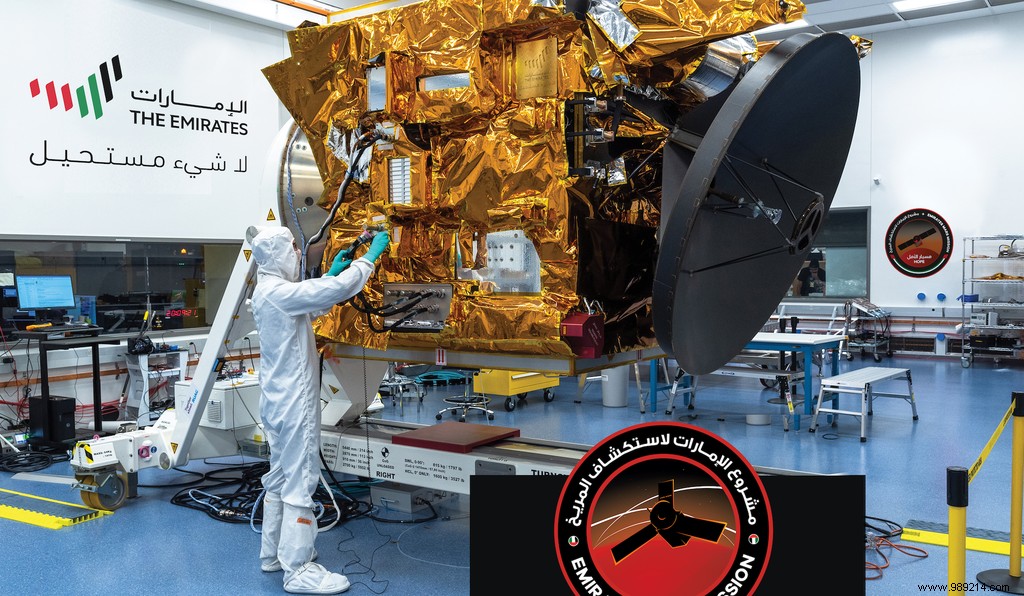Hope, the first Mars mission from the United Arab Emirates (UAE), will reach the red planet on February 9, 2021, government officials said on Sunday. The probe, placed in a high elliptical orbit, will aim to focus on studying its atmosphere.
Every 26 months or so, when Earth and Mars are aligned favorably, missions can be sent to the Red Planet at more affordable prices (shorter travel times). One of those launch windows opened this summer. Three countries then took advantage of it:the United States (Mars 2020 mission), China (Tianwen-1 mission), and the United Arab Emirates (UAE), with their Hope mission. This is what interests us today.
Placed at about 40,000 km altitude, the Hope probe will aim to study the Martian atmosphere and climate. In particular, it will be a question of evaluating the correlations between current meteorology and the past climate of the planet, or even of studying atmospheric changes over the course of a day and through the seasons. In addition, it is also planned to learn more about the exchanges between the lower and upper layers of the Martian atmosphere. The Mars orbiters MAVEN (NASA) and ExoMars Trace Gas Orbiter (ESA), offer roughly similar objectives.
"The Hope Project carries the hopes and ambitions of our nation, and more generally the aspirations of Arab and Islamic peoples for a better future" , said Sheikh Mohammed bin Rashid Al Maktoum, Prime Minister of the UAE, a few months ago.
For Omran Sharaf, the mission leader, this project also aims to inspire the hundred million young people in the Arab world, “showing them a future beyond beyond oil”, which will not be able to carry the economy of the country forever. “Failure [on Mars] is an option” , he added. "But the failure of progress is not" .

That said, the mission, launched on July 20 from the Japanese base of Tanegashima, should normally arrive on site on next February 9 , government officials said on Sunday. A remarkable arrival which will fall the same year as the 50th anniversary of the formation of the country. If successful, the UAE will then be the fifth entity to successfully send a mission to the Red Planet after NASA, the Soviet Union, the European Space Agency (ESA) and the Indian Space Research Organization.
To date, the probe has covered about 60% of the journey, just like the American rover Perseverance. During this time, the ground team (Dubai) checks the health of the ship two to three times a week. The next big step will be the insertion of the probe into Mars orbit. The scientific phase of the mission will begin approximately 75 days after this insertion, and should normally last at least one full Martian year, or 687 Earth days .
Finally, let's remember that the United Arab Emirates also have lunar ambitions. The government plans to send a rover there as early as 2024. If successful, the UAE could become the fourth country in the world to achieve this goal.